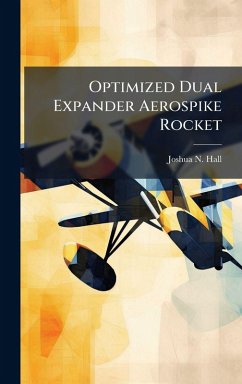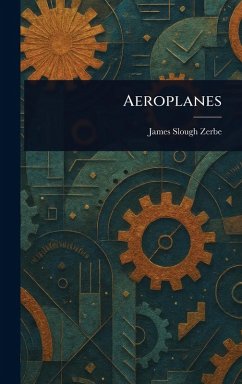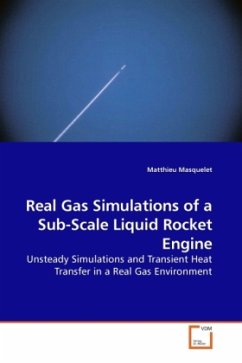
Experimental Studies of Liquefaction and Densification of Liquid Oxygen
Versandkostenfrei!
Versandfertig in über 4 Wochen
29,99 €
inkl. MwSt.
Weitere Ausgaben:

PAYBACK Punkte
15 °P sammeln!
The propellant combination that offers optimum performance is very reactive with a low average molecular weight of the resulting combustion products. Propellant combinations such as oxygen and hydrogen meet the above criteria, however, the propellants in gaseous form require large propellant tanks due to the low density of gas. Thus, rocketry employs cryogenic refrigeration to provide a more dense propellant stored as a liquid. In addition to propellant liquefaction, cryogenic refrigeration can also conserve propellant and provide propellant subcooling and propellant densification. Previous st...
The propellant combination that offers optimum performance is very reactive with a low average molecular weight of the resulting combustion products. Propellant combinations such as oxygen and hydrogen meet the above criteria, however, the propellants in gaseous form require large propellant tanks due to the low density of gas. Thus, rocketry employs cryogenic refrigeration to provide a more dense propellant stored as a liquid. In addition to propellant liquefaction, cryogenic refrigeration can also conserve propellant and provide propellant subcooling and propellant densification. Previous studies analyzed vapor conditioning of a cryogenic propellant, with the vapor conditioning by either a heat exchanger position in the vapor or by using the vapor in a refrigeration cycle as the working fluid. This study analyzes the effects of refrigeration heat exchanger located in the liquid of the common propellant oxidizer, liquid oxygen. This study predicted and determined the mass condensation rate and heat transfer coefficient for liquid oxygen. This work has been selected by scholars as being culturally important, and is part of the knowledge base of civilization as we know it. This work was reproduced from the original artifact, and remains as true to the original work as possible. Therefore, you will see the original copyright references, library stamps (as most of these works have been housed in our most important libraries around the world), and other notations in the work. This work is in the public domain in the United States of America, and possibly other nations. Within the United States, you may freely copy and distribute this work, as no entity (individual or corporate) has a copyright on the body of the work. As a reproduction of a historical artifact, this work may contain missing or blurred pages, poor pictures, errant marks, etc. Scholars believe, and we concur, that this work is important enough to be preserved, reproduced, and made generally available to the public. We appreciate your support of the preservation process, and thank you for being an important part of keeping this knowledge alive and relevant.












